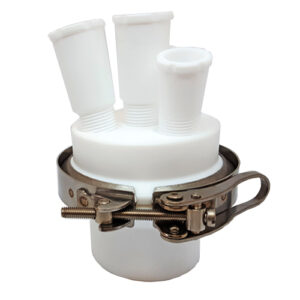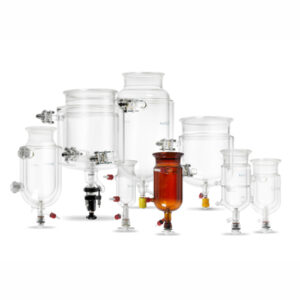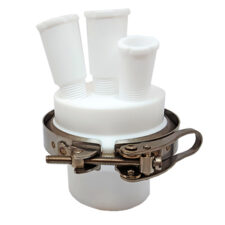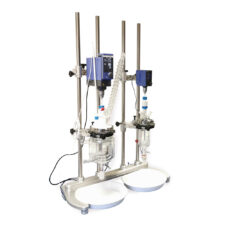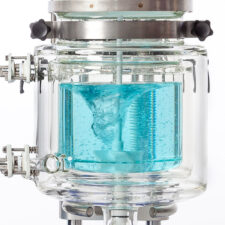The controlled lab reactor is a cornerstone in chemical research and development. For the uninitiated, these are specialised vessels designed to conduct chemical reactions under controlled conditions. Their significance cannot be overstated, especially when it comes to ensuring reproducibility, safety, and efficiency in experimental procedures. This article delves into the intricate process of creating a customised controlled lab reactor, highlighting materials, design, and functionality considerations.
Determining the Requirements
It’s important to identify specific needs and requirements before designing a controlled lab reactor. This involves a thorough understanding of:
- Type of Reaction: Each has its unique demands, whether it’s an exothermic or endothermic reaction for example.
- Temperature Range: Reliable and accurate temperature control can significantly influence the outcome of a reaction. The system must be designed to accommodate the required range fully.
- Reaction Volume: The reactor size should be commensurate with the volume of reactants and products, and ensure necessary space for agitation.
- Chemical Compatibility: Ensuring the reactor’s materials won’t react with the chemicals used is crucial, as is ensuring the integrity and longevity of all seals and connections.
Material Selection: Beyond the Basics
The choice of materials for a controlled lab reactor is pivotal. While glass and polymers are common, it’s essential to match the material with the chemicals involved in the reaction. For instance:
- Glass: Favoured for its transparency and chemical resistance, especially in organic synthesis.
- Polymers: These are often used when there’s a need for corrosion resistance or specific chemical compatibilities.
In addition to the material selection for the vessel itself, specification of the correct o-rings and connectors is essential to achieve an effective seal, preventing leaks and spillages which may be hazardous.
Designing the Reactor: An Art and Science
The design phase is where the controlled lab reactor starts to take shape. Collaborating with manufacturers or an engineering team can help tailor the reactor to specific needs. Key considerations include:
- Reactor Shape and Size: The shape of the vessel will influence mixing and heat transfer. Typical shapes include cylindrica, squatl and spherical, though some manufacturers offer fully bespoke glassware.
- Configuration: This pertains to the arrangement of inlets, outlets, and other features such as drains and type of connectors required. The vessel lid configuration must also be carefully considered.
- Integrated Features: Incorporating temperature control, mixing, sampling and addition ports, and automation software.
Customising Functionality: The Tech Edge
Integrating technology into a controlled lab reactor can elevate its functionality in today’s digital age. Automated temperature control and controlled additions paired with advanced monitoring systems can streamline operations. Moreover, integrating software and hardware for data acquisition and control can provide real-time insights, enhancing the reactor’s efficiency and improving repeatability of results.
Manufacturing and Assembly: Precision is Key
Once the design is finalised, the controlled lab reactor enters the manufacturing phase. This involves meticulous processes by qualified and experienced technicians. Adhering to industry standards and stringent quality control measures ensures the reactor’s longevity and reliability.
Testing and Validation: Ensuring Excellence
Rigorous testing is required before a controlled lab reactor is deemed fit for use. This ensures:
- Temperature Control: Verifying that the reactor operates within the specified ranges.
- Mixing Efficiency: Ensuring uniform mixing of reactants for optimal reaction outcomes.
- Overall Functionality: This encompasses all the reactor’s features, ensuring they function as intended.
Maintenance and Safety: Non-Negotiables
A well-maintained controlled lab reactor ensures consistent results and user safety. Regular inspections, cleaning, and adherence to safety protocols are imperative. This includes guidelines for chemical handling, reactor operation, renewal of seals as appropriate, and addressing potential hazards.
Concluding Thoughts
Creating a customised controlled lab reactor is an intricate process, demanding a blend of scientific knowledge and engineering prowess. However, the rewards, in terms of research outcomes and safety, are unparalleled. For those seeking state-of-the-art solutions, our jacketed lab reactors stand out. They offer safe and ergonomic support, fully bespoke glassware, and a fully customisable platform, ensuring your research needs are met and exceeded. At Asynt, we pride ourselves on delivering excellence every step of the way. Join us in revolutionising the world of chemical research.
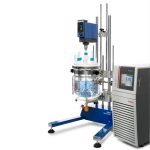 |
ReactoMate ATOM Safe, secure and ergonomic single-handed height adjustment, with a wide range of options and accessories For vessels up to 30 L. |
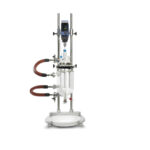 |
ReactoMate DATUM Unique, ergonomic design, with brilliant click-and-clip technology. Wide range of accessories available. For vessels up to 5 L. |
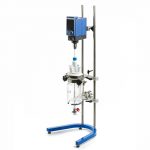 |
ReactoMate QUANTUM No-nonsense, budget-friendly support system designed to work with your existing equipment. For vessels up to 5 L. |
